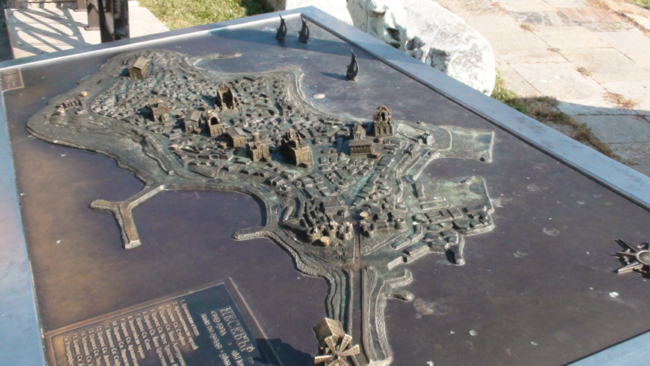 Idea #253 – Visit the city of Nessebar in Bulgaria
Idea #253 – Visit the city of Nessebar in Bulgaria
Nessebar is a historic city of Bulgaria, perched on a rocky peninsula, situated in the center of the littoral region, which goes along the Black Sea. The classic art Menebria or Melsambria is founded, by Thrace, on peninsula close to the coast. The name of the locality meant ” city of Mesla “, in reference to the name of the founder of the city. Two ports exist on the island at that time: one in the North and one in the South, in which the rests of old ships were found.
The locality was hit by the barbaric invasions but few tracks were preserved of this shady period. The city is conquered, for the first time, by the Bulgarians in 812, is given up to the Byzantine, in 864, by czar Boris Ier of Bulgaria then taken back under Siméon Ier’s reign. Because of its geographical situation and of its ports, Messembria remained a strategic city – in any points of view – for Byzantine Empire in the oriental extremity of the Balkans and in the western part of the Black Sea. In 1366, the city is taken by the crossed army of Amédée VI de Savoie, then retroceded in Byzantine Empire. In 1396, the city is taken by Turks and integrated into 1453 in Ottoman Empire.
Under the Ottoman domination, Misivri, its new naming, loses of its importance even if a cultural and economic life remain. In the XIXth century, Nessebar is the center of a kaza of the Sandjak d’Islimye. The city still possesses rests of the Greek surrounding wall built in the VIth century BC., but which was partially gobbled up by the sea, just like the Acropolis which was in the extremity is from the peninsula. Over the north port set up itself Zeus Hyperdexio’s temple, destroyed at the beginning of the Christian era and replaced by a basilica.
Under the Byzantine domination, the outer wall is reconstructed and towers are added to it. Two remarkable basilicas are built on the architectural model influenced by that of Constantinople. In the Middle Ages, rich Bulgarian and Byzantine families compete in the care brought to the embellishment and to the urbanization of the city, in particular in the construction of numerous churches and chapels.
Over the centuries according to, the facades of houses grow rich of a specific ornamentation which consists in the ornamental alternation of white freestones and red bricks where incorporate tiles of painted ceramic varnished. The city, become a seaside town, is registered on the UNESCO world heritage list since 1983.

Some Pictures
Where is it ?
Nessebar, Bulgaria
Larger Map













